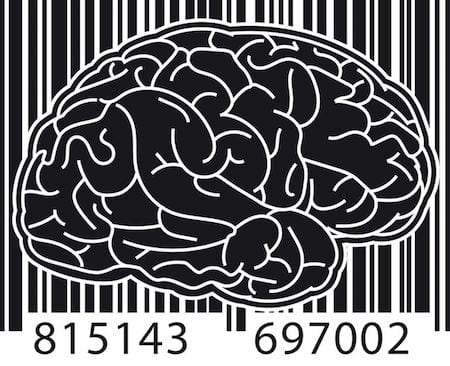Three cutting-edge technologies are revolutionizing the field of neuromarketing and its potential impact on the world. This article explores the transformative power of these advancements and their implications for marketers. From brain imaging techniques to advanced data analytics and artificial intelligence, neuromarketers are harnessing these tools to gain unprecedented insights into consumer behavior and optimize marketing strategies.
Table of Contents
Today’s overcrowded environments expose consumers to so many advertising stimuli that it becomes impossible to consciously notice them all. This raises considerable thought about the most practical ways to assess advertising effectiveness.
Marketers now know that emotional experience is a key component driving impactful attention, memory, and attitude shift which in turn influence purchase decisions.
Despite that, it’s often hard to optimize and deliver desired emotional experiences because emotions happen beyond our conscious awareness and are therefore difficult if not impossible to verbalize. In fact, traditional market research methods can’t offer an insightful overview of what’s happening in the brain during exposure to advertising.
The lack of insights suggests that it’s about time to rethink how marketing is done, wherefore the use of neuromarketing is becoming a more popular and effective method to understand the consumer’s world.
/Neur
Eye tracking
The general belief that memory will determine the effectiveness of advertising has led to the idea that more memorable ads would generate more sales. For years, memorability of an ad has been a central focus of academic and market researchers alike, however, the impact of attention to marketing material remained underestimated.
Although it’s not new that attention to advertising stands as the first stage of ad processing, it seems that little effort is put to understand how the size and placing of pictorial, text, and branding elements in an ad change baseline and incremental attentional transfer from one element to others.

It’s useful to distinguish between baseline and incremental types of attention. In many cases, baseline attention determines whether or not the consumer is likely to devote an extra amount of incremental attention to an ad. Baseline attention is often automatic and is captured by pictorial elements of an ad.
Incremental attention is believed to be selective and is transferred from pictorial to text or branding elements of an ad. It is therefore dependent on the amount of baseline attention. Not much is known about attention transfer in complex scenes, so how should advertisers decide how to combine pictorial, text, and branding elements to reach maximum impact?
One way to test the impact of different ad elements is to use eye tracking. It can be done by using glasses with integrated cameras or a screen-based eye tracker.
Eye movements are outstanding indicators of visual attention, which is why eye tracking tools can give invaluable information about sequence and frequency of saccades and fixations. Such data can help to track how consumers extract and accumulate information from the ad as well as determine how size, color, and placing of different ad elements shape accuracy and latency of ad’s memorabilia.
Eye Tracking Screen Based
Measure visual attention on monitors and mobile devices with the screen-based eye tracking module.
See Features NowFacial Coding
Decades of studies demonstrated how emotional reactions shape the attitude towards an ad or brand which in turn alters the consumer’s intention to purchase the advertised product.
Despite that, researchers still struggle to assess whether or not commercials evoked desired emotions and find it difficult to determine a point in which they occur. The reason why it’s so problematic to measure emotions is because they belong to the category of nonverbal communication, but traditional research methods like surveys and focus groups barely allow to identify exact points at which they occur.

One of the richest sources of nonverbal information is facial expressions. Facial expressions are so informative and truthful because they are easily visible to others, occur spontaneously, and are hard to control. In fact, not only the presence but also the absence of emotional expressions can be used to determine spontaneous reactions to advertising material.
It’s been shown that people can make up to 10 000 facial movements that reflect 7 basic emotions: happiness, sadness, anger, fear, disgust, contempt, and surprise. Altogether, these emotions are further classified into positive and negative and are believed to influence the consumer by eliciting motivation to approach or withdraw.
Needless to say, it’s absolutely crucial to fix elements that fail to deliver desired emotions. But what are the tools to effectively assess that?
Today, the rise of cutting-edge interdisciplinary face-reading technologies open the opportunity to uncover hidden consumer reactions in a new way. For example, software companies such as Affectiva or the recently acquired Emotient, allow to identify and track emotions from the beginning to the end of a commercial.
Such tracking enables to bridge the gap between attention to ad and purchase decisions by identifying the elements which disrupt the development of the desired feel of an ad and therefore allows to predict the effectiveness of advertising with higher accuracy.
EEG (Electroencephalogram)
Eye tracking and facial coding technologies have traditionally concentrated on measuring attention and emotion. However, a more detailed information about physiological responses to advertising is often necessary in order to gain a more holistic picture of the effectiveness of TV commercials. For example, it’s seldom simple to determine which elements of a TV commercial contribute to memorability.
Scientists have suggested that higher emotional intensity leads to better memory encoding. While some face coding software enables to track emotional intensity, these measures do not give any direct information about memory processes such as encoding and retrieval of information.
Therefore it becomes complex to note at which point memory processes started or ended. The challenge with identifying memory processes is that they begin before as little as 300ms from stimulus onset which is below the threshold of conscious awareness.
Until recently, little effort has been put to distinguish between implicit and explicit memory processes. In traditional market research, explicit memory is tested using the measures of recall and recognition. However, neuroscience has demonstrated that implicit memory is often a much better predictor of consumer behavior because it drives automatic and effortless responses to advertising.
Despite that, traditional research techniques do not offer options to assess that. In contrast, EEG can be used to track millisecond by millisecond changes in brain activity.

Not only can these recordings give information about implicit memory processes, but also measure emotional intensity and valence. Standard academic 64 or 128 channel EEG headsets might be impractical for commercial practices because of the complexity of data and inconvenience of testing, however, simplified 14 channel versions, like for instance the Neuroelectrics, were proven to be an insightful and cost-effective choice to tap into the unconscious.
The challenge with applying neuroscience tools to test advertising effectiveness is that it’s rarely enough to use single techniques like eye tracking, facial coding, or EEG to answer all necessary questions.
- Check out our recent article on 5 Marketing Myths disproved by Neuromarketing
For example, eye tracking does not give a good clue about emotional intensity, facial recognition does not answer which elements are being encoded into long term memory, and EEG can’t provide heatmaps to identify specific parts of an ad that caused desired or undesired brain responses.
As a solution, iMotions offers a platform which allows integrating eye tracking, facial expression analysis, EEG recordings and much more into a single testing session. Find out more about iMotions software here.
Free 59-page EEG Guide
For Beginners and Intermediates
- Get a thorough understanding of the essentials
- Valuable EEG research insight
- Learn how to take your research to the next level

References
Gorgiev, A., & Dimitriadis, N. (2015). Upgrading Marketing Research: Neuromarketing Tools for. Trends and Innovations in Marketing Information Systems, 337.
Keller, K. L. (1987). Memory factors in advertising: The effect of advertising retrieval cues on brand evaluations. Journal of Consumer Research, 14(3), 316-333.
Niedenthal, P. M., Brauer, M., Halberstadt, J. B., & Innes-Ker, Å. H. (2001). When did her smile drop? Facial mimicry and the influences of emotional state on the detection of change in emotional expression. Cognition & Emotion, 15(6), 853-864.
Ohme, R., Reykowska, D., Wiener, D., & Choromanska, A. (2010). Application of frontal EEG asymmetry to advertising research. Journal of Economic Psychology, 31(5), 785-793.
Pieters, R., & Wedel, M. (2004). Attention capture and transfer in advertising: Brand, pictorial, and text-size effects. Journal of Marketing, 68(2), 36-50.
Wedel, M., & Pieters, R. (2000). Eye fixations on advertisements and memory for brands: A model and findings. Marketing science, 19(4), 297-312.
Can we help you?
For more information about how iMotions can help with your neuromarketing efforts please feel free to contact us











